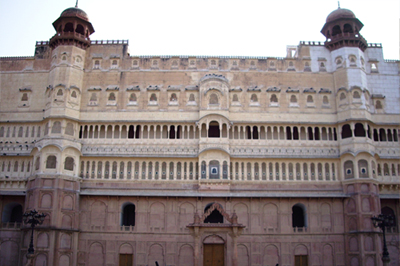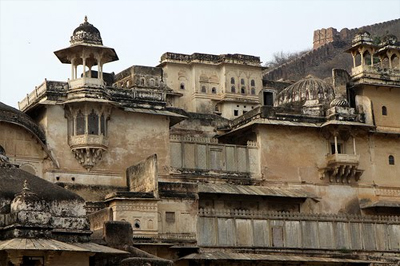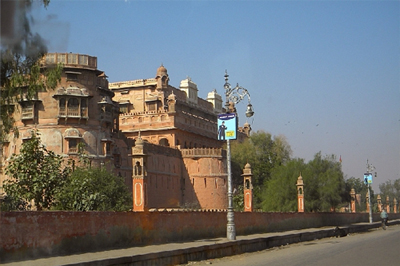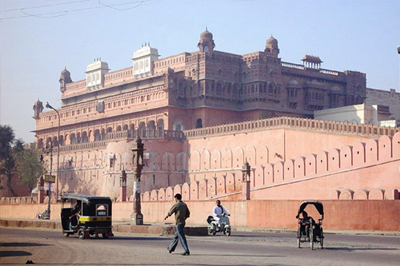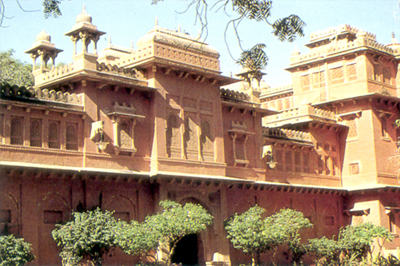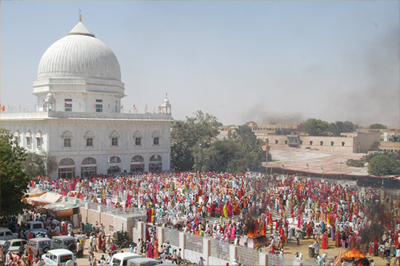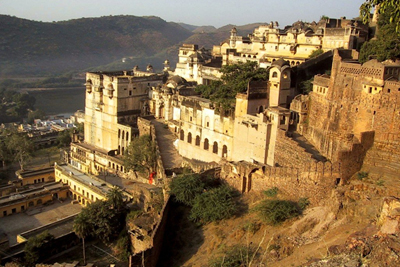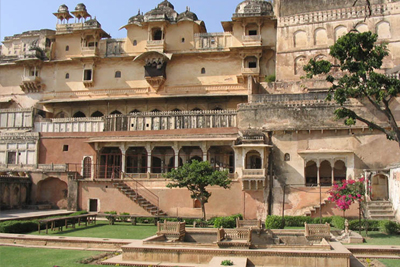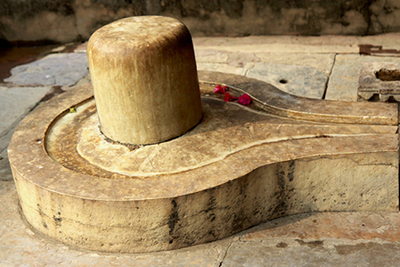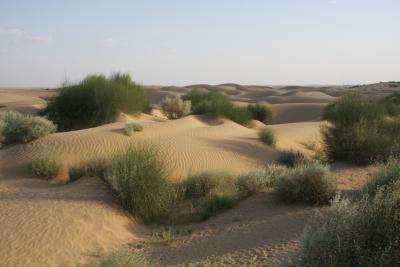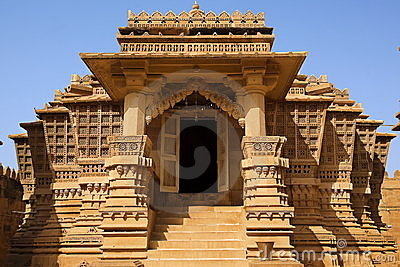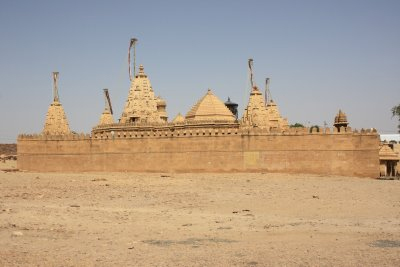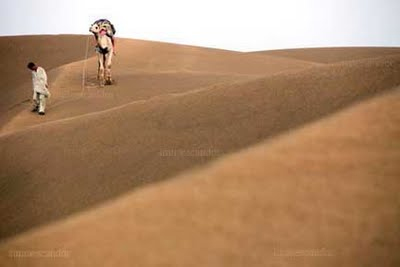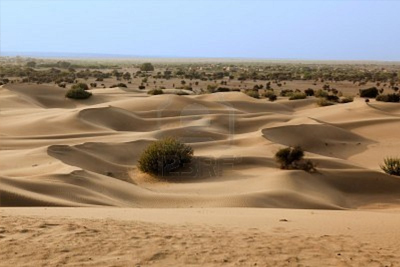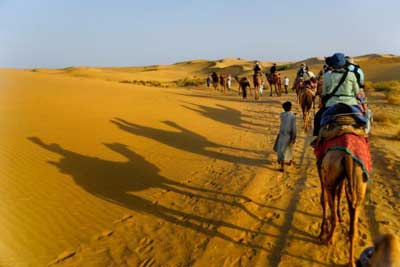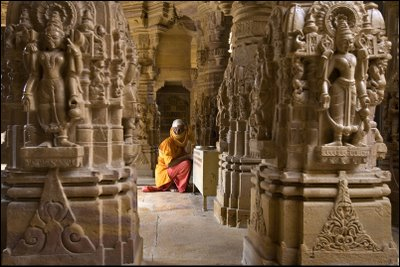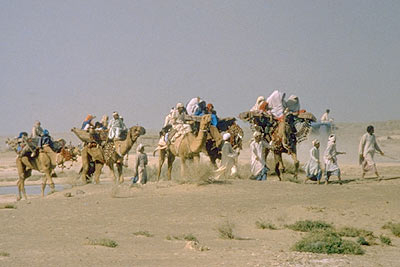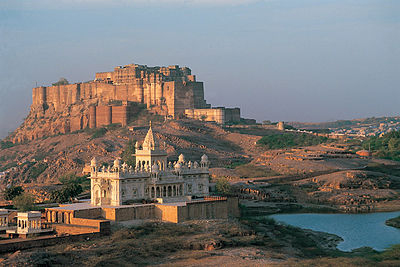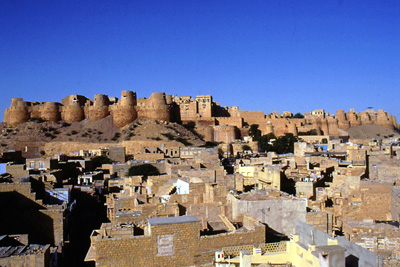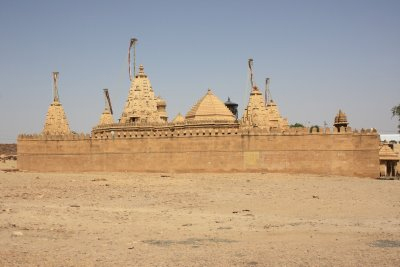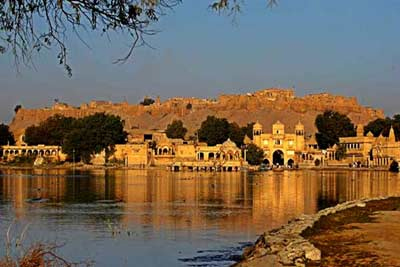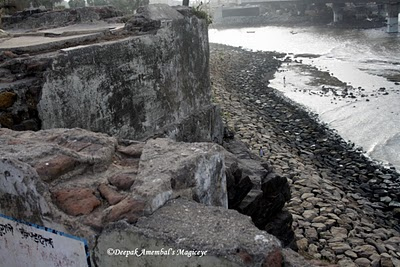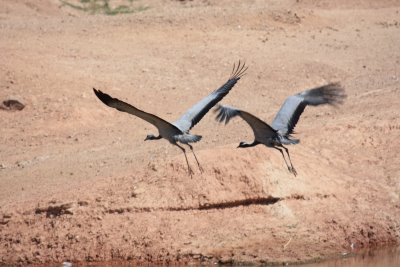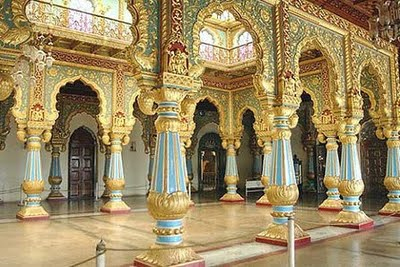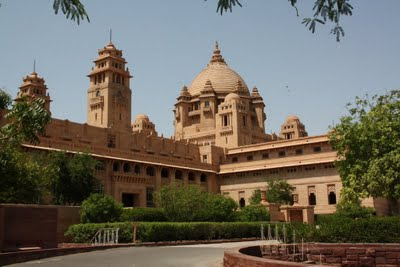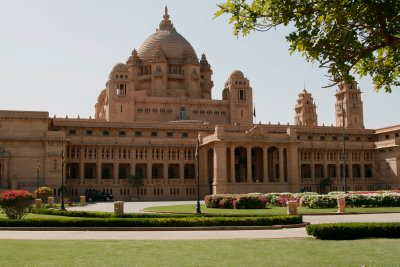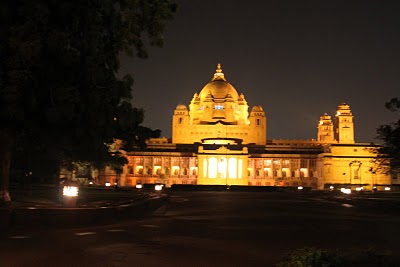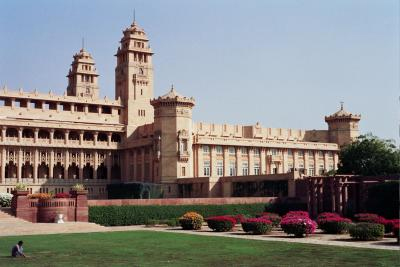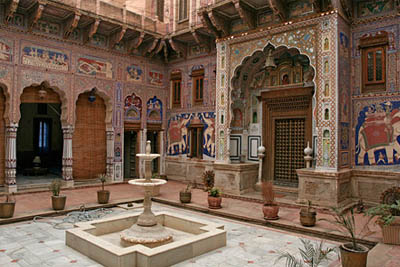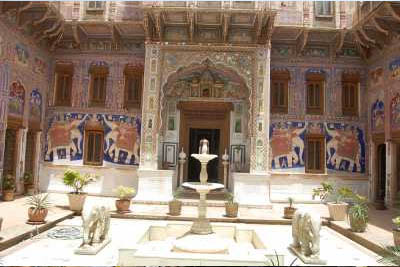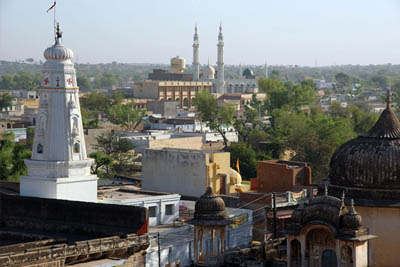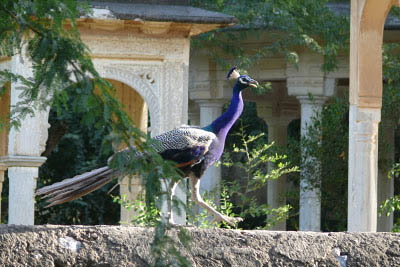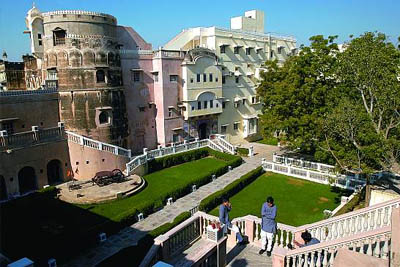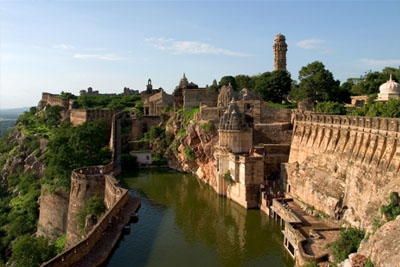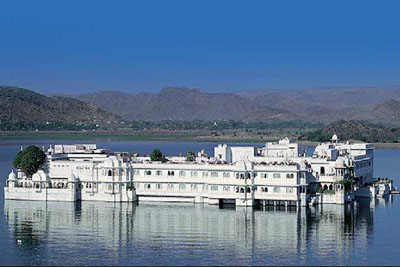Top Services
Bikaner
Tours
Bikaner
Lying in the north of the desert state, the city is dotted with scores of sand dunes. Bikaner retains the medieval grandeur that permeates the city's lifestyle. More readily called the camel country, the city is distinguished for the best riding camels in the world and hence boasts of having one of the largest Camel research and breeading farm in the world. The ship of the desert is an inseparable part of life here.
A camel besides doing transportation duties, also works on wells. These are built on high plinths with slender minarets on each of the four corners and can be noticed even from a distance.Modern Bikaner is the result of the foresight of its most eminent ruler Maharaja Ganga Singh (1887 1943) whose reformative zeal set the pace for Bikaner transformation from a principality to a premier princely state.
The strategic location of Bikaner on the ancient caravan routes that came from West/Central Asia made it a prime trade centre in those times. Bikaner stands on a slightly raised ground and is circumscribed by a seven km long embattled wall with five gates. The magnificent forts and palaces, created with delicacy in reddish-pink sandstone, bear testimony to its rich historical and architectural legacy. Surging lanes, colourful bazaars with bright and cheerful folks make Bikaner an interesting experience to explore.
BUNDI
Tours
BUNDI
It is the undiscovered splendour, 36 Kms from Kota ruled by the Hada Chauhans. First destination is HADOTI. Set in a narrow inclining gorge. The palaces and forts have fairy tale quality about them. Isolated and independent, this picturesque location has much to offer. Rajput architecture shines and in the intricately carved brackets, pillars etc. Interesting places are Diwan-e- aam, Hathia Pol, and Naubat Khana.
The Chitra SHALA has a colourful glimpse of history painted on ceilings and walls, making it an open art gallery. The paintings of Bundi School are famous for its festivals, animals and birds scenes portrayed beautifully. During the state time Bundi was popular for hunting's and so are the hunting lodges like Phool Sagar Palace, Sukh Mahal and Shikar Burj.
JAISALMER
Tours
JAISALMER
Its like straight out of an Arabian Nights fable. The name Jaisalmer induces a dramatic picture of utter magic and brilliance of the desert. The hostile terrain not with standing the warmth and colour of people is simply over whelming. One of the main draws is the daunting 12th century Jaisalmer Fort. The beautiful havelis which were built by wealthy merchants of Jaisalmer are yet another interesting aspect of the desert city. And you can let your eyes caress the sloppy sand dunes while you ramble your way in a camel safari. The desert citadel is truly a golden fantasy in Thar Desert.
Bhatti Rajput ruler Rawal Jaisal, after whom the city finds its name, founded Jaisalmer in 1156. On advice of a local hermit Eesaal he chose the Tricut Hills as his new abode abandoning his vulnerable old fort at Luderwa just 16 kilometres northwest. In Medieval times, its prosperity was due to its location on the main trade route linking India to Egypt, Arabia, Persia, Africa and the West.
Ages have gone by and the monuments of Jaisalmer have withstood the buffeting winds of the desert all through. Jaisalmer is a marvel of beautiful culture and harsh climatic conditions, together amounting to a memorable experience. The old city was completely encircled by wall but much of it is now pulled down sadly for want of building material in recent years. The massive golden fort, which is the essence of Jaisalmer, is entered through First Gate.
JAISALMER FORT
Tours
JAISALMER FORT
Known as SONAR QUILA or the Golden fort, rising from the sand , the mega structure merges with the golden hues of the desert ambience and the setting suns in its most colourful shades gives it a fairy tale look. Its simply a magic, the bastions envelops a whole townships that consist of palace complex various security sources and the havelis of rich merchants carved with an incredibly light touch, several temples and the residential complexes of the armies and traders placed strategically on the trade route, from where the ancient caravans passed en-route passing all the riches for the prosperity to an otherwise non source full kingdom.
These merchants served and acquire a great deal of power and noble status in the royal courts of Bhatti Rajputs who founded the state in the 12th century and proceeded further. But the rich merchant inspired by the classic style of the royals , constructed huge mansions (havelis) adjacent to each other in the nature of medieval culture and profusely decorated walls and ceilings and intricately carved outdoors and interiors. The craftsmen were usually travellers who were induced on their journey to exhibit their skills. The results was architectural purity that cannot be seen elsewhere.
JODHPUR
Tours
JODHPUR
This bustling desert city is the second largest city in Rajasthan after Jaipur and has landscape dominated by the massive Meherangarh Fort topping a sheer rocky ridge. The old city is fenced by 10 km long wall with eight Gates leading out of it. The new city is outside the walled city. Rao Jodha, a chief of the Rathore clan, founded the city in 1459 and it is named after him.
In the reign of Maharaja Umed Singh Jodhpur grew into a fine modern city. The quintessence of Jodhpur was its valour and equestrian skill. Polo has been the traditional sport of the Jodhpur nobility since medieval times. Jodhpur is also military and air force station and has a large cantonment and airbase.
UMAID BHAWAN PALACE
Tours
UMAID BHAWAN PALACE
Maharaja Umaid Singhji who built this palace was fascinated with western lifestyles so he marshalled the services of a well-known Edwardian architect, Henry Vaughan Lanchester, a creditable equal of Edward Lutyens (architect of New Delhi) to construct a three hundred and forty seven roomed Umaid Palace. This was to become India's last of the great palaces and the biggest private residence in the world.
Spectacular Central Rotunda, the cupola rises to a hundred and five feet high; the Throne Room with its exquisite Ramayana murals; an elegant wood-panelled library, and even a private museum; an indoor swimming pool, a Billiards Room, tennis courts and unique marble squash courts makes Umaid Bhawan Palace unabashedly the most magnificent. The Palace is now a five star deluxe palace hotel. The museum of the palace is highly recommended for its display of weapons, an array of stuffed leopards, a huge banner presented by Queen Victoria and an incredible collection of clocks.
Shekhawati
Tours
Shekhawati
This is a semi desert region in north Rajasthan and it is situated entirely in the triangle between Delhi-Bikaner-Jaipur. Shekhawati is a region and not just a town or fort; it takes its name after its ruler Rao Shekha. Shekhawati means the garden of Shekha. The towns of Shekhawati are eminent for their amazing painted havelis. Such is the appeal of the havelis that this region is dubbed as "open art gallery of Rajasthan".
The plethora of painted Havelis is rich artistic tradition makes it commendable and fascinating. Most of the buildings are dated from 18th century to early 20th century. The Shekhawati landscape is dotted with so many havelis that tracking them is something like a treasure hunt. Various forms of fine art adorn the walls and the ceilings of these structures, complimenting the otherwise flat and barren land. The havelis are noted for their frescos depicting mythological themes and that of huge animals. Founded in the 18th Century by Nawal Singh, it has some of the finest frescos in the Shekhawati region.
A huge fort with colourful bazaar and numerous havelis with elaborate architecture makes it an interesting destination for a 1day / 1 night stay. There are a few prominent havelis like Anandilal Poddar Haveli, Aath Haveli, Hodh Raj Patodia Haveli etc., which are to be visited, and so are the two forts and the palace hotel Roop Niwas that is a beautiful heritage property and is renovated with modern facilities. The Palace offers spacious painted rooms, Luxurious interiors, graceful hospitality and great thematic evenings with sumptuous cuisine. The registered painting in their Art Gallery is a treat to the o visuals.
The Goenka Haveli is worth a visit for the beautiful frescos and the fine mirror work above the windows and features of Florets and birds in the outer courtyard. There are better-preserved paintings in few other havelis and chattris. A peep into the village on a camel safari is rather interesting. A fine breed of horses has been a passion with the family ancestors and continues till this time by their descendent. These royal studs are available for riding and horse safari.
Udaipur
Tours
Udaipur
Udaipur is known as the Venice of the east. It is also called the city of lakes. The Lake Palace on Jag Niwas Island in the middle of Pichola Lakes is the finest example of its architectural and cultural explosion. The grand City Palace on the banks of the lake compliments the palace along with the Monsoon Palace (Sajjan Garh) on the hill above. Udaipur is also the centre for performing arts, craft and its famed miniature paintings.
The Shilp Gram festival is a center of attraction during the season. Maharana Udai Singh II founded Udaipur in 1568 after his citadel Chittorgarh was sacked by Mughal Emperor Akbar. The legends says that Udai Singh was guided by a holy man meditating on the hill near Pichola Lake to establish his capital on this very spot. Surrounded by Aravali Ranges, forests and lakes this place was less vulnerable than Chittorgarh.

